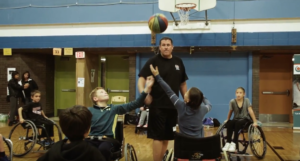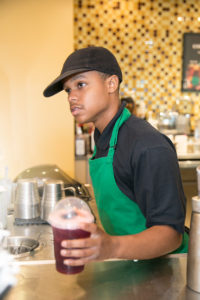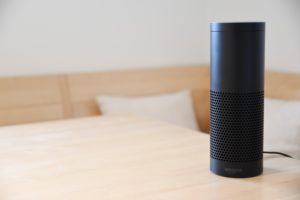 An opinion piece about the banning of plastic straws in different businesses and municipalities published in the Washington Post earlier this month caught my attention. Written by disability advocate Karin Hitselberger, the piece was brilliant at describing what the word “access” means in a pretty short sentence: Access is about the quality of life, and being able to have the same experiences and opportunities as a nondisabled person, with some adaptations.”
An opinion piece about the banning of plastic straws in different businesses and municipalities published in the Washington Post earlier this month caught my attention. Written by disability advocate Karin Hitselberger, the piece was brilliant at describing what the word “access” means in a pretty short sentence: Access is about the quality of life, and being able to have the same experiences and opportunities as a nondisabled person, with some adaptations.”
Karin Hitselberger lost me, though, when she claimed the efforts of businesses and municipalities to help reduce ocean pollution by discouraging the use of plastic straws is an accessibility issue. “This isn’t about straws,” she wrote. “It’s about access”.
I’d say it’s about both.
You regular Easterseals blog readers know that I’m a huge fan of the word “reasonable” when it comes to reasonable accommodations for people with disabilities, but in my view, the “reasonable” part applies to both parties. How about we work together on this one so everybody wins? It doesn’t seem unreasonable to ask people who need plastic straws to bring their own. I have Type 1 diabetes and need insulin to be able to eat, and I bring it along when I eat at restaurants. I am blind and can’t tell if the packets at a coffeeshop are sugar or artificial sweetener. I suppose I could demand that packets be Braiilled for those of us who can’t see, but so few of us read Braille that this would seem an unreasonable request. So I just bring my own packets to make sure I’m getting what I need. People who need straws to eat and drink and bring their own along when they eat out will not only ensure they have what they need, but also know their efforts can help the environment by cutting down the number of people using straws when they don’t absolutely need to.
In her article, Karin Hitselberger points out how complicated life with a disability can be:
Living with a disability means having to worry about things on a daily basis that never cross other people’s minds. It means worrying about whether somebody will come to help you get out of bed in the morning. It means a morning commute completely derailed by an elevator outage. Living with a disability means only being able to travel to cities where accessible transportation is an option. Living with a disability takes a lot of planning and energy and learning how to exist in a world that is not made for you
I agree. Living with a disability takes a lot of planning and energy. Accessible transportation is a necessity. Accessible jobs, technology, education and civil rights are necessities. I also agree that learning how to live in a world that is not always made for people with disabilities can be a challenge. But asking us to bring an insulin pen or a packet of artificial sweetener or a straw along when heading out? That just doesn’t seem so challenging. To me, it doesn’t qualify as an unreasonable request.
What is your take on companies getting rid of plastic straws? Is it an issue of access? Let us know in the comments section.




 Schools are instrumental in breaking down barriers, fears and misunderstanding about disabilities. By celebrating and enlightening kids, school becomes the change agent the world needs to include and accept children with disabilities in every aspect of life.
Schools are instrumental in breaking down barriers, fears and misunderstanding about disabilities. By celebrating and enlightening kids, school becomes the change agent the world needs to include and accept children with disabilities in every aspect of life.
 Travel via school bus and school transportation involves much more than just being on the bus. It also involves getting to the bus, getting on the bus, getting off the bus and then getting from the bus to the school building. The
Travel via school bus and school transportation involves much more than just being on the bus. It also involves getting to the bus, getting on the bus, getting off the bus and then getting from the bus to the school building. The  Just got word from a program called
Just got word from a program called  When I lost my sight in the 1980s, authorities set me up at a residential facility to learn how to use a white cane, read Braille, that sort of thing. All the students there were adults, and all of us had lost our sight fairly recently.
When I lost my sight in the 1980s, authorities set me up at a residential facility to learn how to use a white cane, read Braille, that sort of thing. All the students there were adults, and all of us had lost our sight fairly recently. Ever been to an Accessibility Camp? Me, neither. I’d never even heard of such a thing until I got an invite to attend
Ever been to an Accessibility Camp? Me, neither. I’d never even heard of such a thing until I got an invite to attend  As I was scrolling through Instagram on my way home from work the other day (taking the train, of course! Don’t Instagram and drive!) I came across an ad sandwiched between photos of a dripping ice cream cone and someone’s baby.
As I was scrolling through Instagram on my way home from work the other day (taking the train, of course! Don’t Instagram and drive!) I came across an ad sandwiched between photos of a dripping ice cream cone and someone’s baby.
 People with disabilities of all genders, races, socioeconomic statuses, and ethnicities have a history of making the world and our communities richer, better places. What potential do we then lose when we allow barriers to prevent our fellow humans from participating?
People with disabilities of all genders, races, socioeconomic statuses, and ethnicities have a history of making the world and our communities richer, better places. What potential do we then lose when we allow barriers to prevent our fellow humans from participating? Election officials around the country are hard at work getting voters registered and registrations updated as the Nov. 6 General Election approaches. In some states, the
Election officials around the country are hard at work getting voters registered and registrations updated as the Nov. 6 General Election approaches. In some states, the 
 Election Day is just two weeks away, and all 435 seats in the U.S. House of Representatives are up for election this year. Additionally, 35 seats in the U.S. Senate are up for election as well. People with disabilities can make sure their voices are heard in this election by
Election Day is just two weeks away, and all 435 seats in the U.S. House of Representatives are up for election this year. Additionally, 35 seats in the U.S. Senate are up for election as well. People with disabilities can make sure their voices are heard in this election by  There is something to be said about stepping away from one’s responsibilities – the sink piled up with dishes, the unmade bed, the unanswered emails awaiting in your inbox – and just taking a nice, steady stroll to nowhere in particular. The clouds up above and the sidewalk beneath you, you wind around your block; maybe to the park, maybe just a quarter of a mile in any direction.
There is something to be said about stepping away from one’s responsibilities – the sink piled up with dishes, the unmade bed, the unanswered emails awaiting in your inbox – and just taking a nice, steady stroll to nowhere in particular. The clouds up above and the sidewalk beneath you, you wind around your block; maybe to the park, maybe just a quarter of a mile in any direction.
 Elena did an expert job of selecting her princess costume last year, but Halloween 2017 was inauspicious to say the least. Elena was in the midst of declining health back then, and after Christmas she spent two months in the hospital.
Elena did an expert job of selecting her princess costume last year, but Halloween 2017 was inauspicious to say the least. Elena was in the midst of declining health back then, and after Christmas she spent two months in the hospital. My wife and I have learned not to be disappointed by things like this. We want Elena to know that she isn’t obligated to perform for others. She isn’t the class mascot. She is not required to show others what she can do. We want her to do things on her own terms.
My wife and I have learned not to be disappointed by things like this. We want Elena to know that she isn’t obligated to perform for others. She isn’t the class mascot. She is not required to show others what she can do. We want her to do things on her own terms. November is Assistive Technology Awareness Month, and to remind everyone the important role assistive technology plays in the lives of people with disabilities, Northern Illinois University student Alicia Krage is sharing an assistive technology journal she kept on a recent Tuesday at school. Interested in sharing your assistive technology journal? Let us know in the comments!
November is Assistive Technology Awareness Month, and to remind everyone the important role assistive technology plays in the lives of people with disabilities, Northern Illinois University student Alicia Krage is sharing an assistive technology journal she kept on a recent Tuesday at school. Interested in sharing your assistive technology journal? Let us know in the comments!







